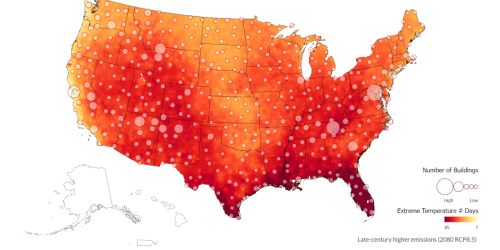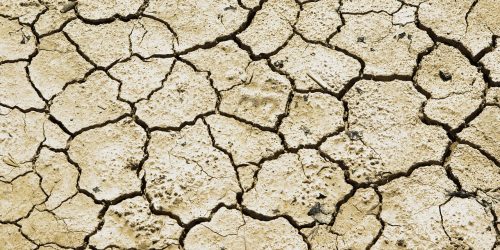Date: November 30 – December 2, 2020, 10am -3pm Eastern
Background: Many extreme events and the impacts they cause (e.g., billion-dollar disasters) are associated with precipitation amounts (either too much or too little). A key to reducing these impacts is to be able to anticipate when, where and how much precipitation will fall. Although models have a good track record of simulating global and regional temperature, precipitation related fields are not captured as well. The challenges in forecasting precipitation and the ongoing user needs have been acknowledged by the U.S. Congress and the Executive Office of the President with several established mandates, including the 2017 Weather Act, and the administration’s 2020 Earth System Predictability priority led by Office of Science and Technology Policy (OSTP). NOAA has recently launched the Precipitation Prediction Grand Challenge (PPGC) Initiative to help further align NOAA’s research efforts in the coming years. DOE’s Earth and Environmental Systems Sciences Division (EESSD) has both a broad interest in water cycle predictability—the 2018 EESSD strategic plan identifies Integrated Water Cycle as one of its 5 grand challenges in —as well as a focused interest in precipitation, reflected also by workshops conducted and portfolio of funded research. To accelerate progress in addressing precipitation biases and improving precipitation simulations and predictions across a broader set of phenomena and timescales, it is important to know practicable predictability limits and opportunities therein. Many model biases are due to inadequate representations of key physical processes (such as convection, aerosol-cloud interactions, coupling of atmosphere, ocean, sea ice and land, boundary layer) in models. Purpose: The workshop will focus on advancing understanding of precipitation predictability and physical processes key to precipitation biases. The workshop will bring together the observational, modeling, and research communities to address the following questions:
- What are the sources of predictability that have the biggest influences on precipitation at weather, subseasonal-to-seasonal to multi-decadal timescales, including extremes?
- What are the key physical processes that have the strongest imprint on the model biases and precipitation predictions and projections?
- How can we most effectively take advantage of existing observations and data (satellite and in-situ) to advance process-level understanding of the key processes and predictability?
- What are the gaps and needs for targeted observations and process studies to improve understanding and model representations of those key processes?
- How do we benefit from national and international collaboration to make significant progress?
The workshop will run from 10am – 3pm (ET) each day, with a 1-hour break for lunch from 12pm – 1pm (ET).
Date/Time |
Title |
|---|---|
| November 30th |
Overview & ScopeWorkshop introduction Co-chairs: Jin Huang (NOAA/CPO), Renu Joseph (DOE/ESSMD) |
Limits/sources of predictabilityThis session is aimed at (a) quantifying the current estimates of the limit of precipitation predictability, and the extent to which those estimates are realized as prediction skill, (b) identifying the key biases most likely to impact precipitation prediction over the US at different time scales, (c) propose strategies for exploiting existing and new observations and observation-modeling integration activities to diagnose and address the biases using new methodological and technological advances and finally (d) put forward diagnostics and metrics for quantifying prediction skill and predictability limits that can be used to detect small advances on precipitation forecasts for long term monitoring of progress. Co-chairs: Ben Kirtman (U. Miami), Magdalena Balmaseda (ECMWF), Samson Hagos (DOE/PNNL) |
|
| December 1st |
Key processes critical to precipitation biasesThis session will discuss key processes relevant to precipitation in observations and in global models and identify the deficiencies and missing physics in current models to gain insights for further improving the prediction and simulations. Co-chairs: Hsi-Yen Ma (DOE/LLNL), Yi Ming (NOAA/GFDL) |
Interdisciplinary processesThis session covers key processes and interactions that are important in the transition zones on either side of an interface such as, ocean-atmosphere, land-atmosphere, aerosol-cloud-precipitation transitions, and troposphere-stratosphere connections. Co-chairs: Sally McFarlane (DOE/EESSD), Sandy Lucas (NOAA/CPO) |
|
| December 2nd |
Regional PrecipitationThis session focuses on the regional aspects of precipitation prediction challenges, with emphasis on gaps in our observing systems, advanced data assimilation methods, and representation of key physical processes in the numerical prediction models for capturing severe weather events, their climatology, and variability. Co-chairs: Angie Pendergrass (NCAR), Vijay Tallapragada (NOAA/NWS) |
Agencies/Programs Inputs; Wrap upWorkshop wrap up. Co-chairs: Jin Huang (NOAA/CPO), Renu Joseph (DOE/EESSD) |
Expected Outcome: A workshop report will be developed to summarize discussions, key findings, and research recommendations. The report will inform the scientific communities and modeling centers about research gaps and opportunities for collaboration to improve understanding of precipitation processes and predictability. Science Committee: Magdalena Balmaseda (ECMWF), Ana Barros (Duke University), Samson Hagos (DOE/PNNL), Ben Kirtman (U. Miami), Hsi Yen Ma (DOE/LLNL), Yi Ming (NOAA), Angie Pendergrass (NCAR), Vijay Tallapragada (NOAA/NWS) Program Organizing Committee: Jin Huang (NOAA/CPO), Renu Joseph (DOE/EESSD), Sandy Lucas (NOAA/CPO), Sally McFarlane (DOE/EESSD), Mike Patterson (US CLIVAR), Yan Xue (NOAA/NWS)
Rapporteurs: John Coggins (NOAA/CPO); Zhe Feng (DOE/PNNL); Bryce Harrop (DOE/PNNL); Huaping Huang (DOE/LBL); Ali Stevens (NOAA/CPO); Die Wang (DOE/BNL) Facilitators: Victoria Breeze (NOAA/CPO); LuAnn Dahlman (NOAA/CPO) IMPORTANT NOTICE: Please note that this meeting service allows audio and other information sent during the session to be recorded. The purpose of this recording is for documenting discussions to be used to develop the workshop report. This recording will be kept internally at NOAA for reference. By joining this session, you consent to being recorded.
Resources
Precipitation Prediction Grand Challenge (Presentation, White Paper – updated on Nov. 19) Earth and Environmental Systems Sciences Division Strategic Plan










